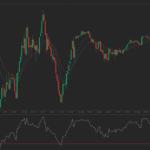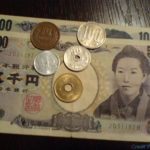 Gold extended last weeks decline as better-than-expected global economic data and higher equities dented the metal’s safe-haven demand. All major European banks passing ECB’s stress test also eased investors’ fears. Copper rose on news of planned strikes in Indonesia and Peru and as the US dollar weakened.
Gold extended last weeks decline as better-than-expected global economic data and higher equities dented the metal’s safe-haven demand. All major European banks passing ECB’s stress test also eased investors’ fears. Copper rose on news of planned strikes in Indonesia and Peru and as the US dollar weakened.
Comex gold for delivery in December traded at $1 228.1 per troy ounce at 15:18 GMT, down 0.30% on the day, having shifted within a daily range of $1 227.1 – $1 232.1. The precious metal gained 0.22% to $1 231.8 an ounce on Friday but settled the week 0.6% lower after two weeks of gains.
Only 25 European banks failed the ECB’ stress test, which included 130 lenders across the region, and pointed out that major bankers are well prepared should the economy sour. About half of the bad performers had already taken actions to address their failings and are considered to be basically stable. Robustness within the sector may lead to further declines in gold demand.
“Good news out of Europe does affect sentiment,” said for Bloomberg Sun Yonggang, a macroeconomic strategist at Everbright Futures Co. in Shanghai. “More importantly, investors will be watching the Fed meeting this week and how that impacts the dollar and equity markets.”
The Federal Open Market Committee will hold its 7th meeting this year on October 28th-29th and the outcome of the gathering is broadly expected to end monthly asset purchases as the U.S. economy strengthened. In addition, the Fed is likely to stick to its “considerable time” phrase in regard to its interest rate hike timetable.
The US dollar fell on Monday on the ECB stress test news and as data from the US came in below expectations. The National Association of Realtors reported that US pending home sales jumped by 0.3% in September on a monthly basis, rebounding from a 1% contraction registered in August. Analysts, however, had projected a 0.5% rise.
Activity in the US services sector grew at a slower pace than anticipated, with the preliminary Markit services PMI registering at 57.3, compared to 58.9 in September. Economists had projected a slowdown to 58.0. This was the weakest rise in the sectors activity since April. New business growth fell to a three-month low but solid rate of job creation was maintained.
The US dollar index for settlement in December traded at 85.570 at 15:14 GMT, down 0.29%, having moved in the range of 85.475 and 85.800 during the day. The US currency gauge rose 0.7% last week.
Assets in the SPDR Gold Trust, the biggest bullion-backed ETP and a proxy for investor sentiment towards gold, fell by 0.6% to 745.39 ton on Friday, the lowest since November 2008.
Copper
Copper rose for a third day on Monday, supported by a weaker dollar and on news of planned strike action at major copper mines.
Comex copper for delivery in December traded 0.72% higher at $3.0630 per pound at 15:18 GMT, having shifted between $3.0740, the highest since October 15th, and $3.0265 during the day. The industrial metal rose ~1.3% last week.
Copper rose after a union official said that workers at Freeport-McMoRan Incs Indonesian copper mine will hold a one-month strike, starting next week, due to management issues related to a fatal accident.
Meanwhile, workers at the biggest copper mine in Peru, Antamina, which is owned by BHP Billiton, Glencore Xstrata, Mitsubishi and Teck, will walk out indefinitely as of November 10th, Reuters reported on Friday. This would bring offline a total capacity of 30 000 tons per month.
Also helping push the market up were rumors that Chinas State Reserve Board has resumed purchasing copper. Citi analysts said in a note: “LME Week brought speculation that the Chinese SRB has once again begun buying copper. We believe the SRB is likely to buy this quarter in size exceeding the 200 000-300 000 tonnes purchased in March-April.”
The red metal also drew support by better-than-expected manufacturing data from China and Europe last week, as well as upbeat employment figures from the US. However, Chinas economy is expected to further cool in 2014, dragging on demand for base metals.
Chinas National Bureau of Statistics reported last week that third-quarter GDP growth beat analysts estimates at 7.3%, but it was still the lowest since Q1 2009.
According to Song Guoqing, an academic member of the People’s Bank of China monetary policy advisory committee, the Chinese economy will grow by 7.2% this quarter and 7.3% in 2015, compared to the 7.5% 2014 target.
Kazuhiko Saito, an analyst at Fujitomi Co., a commodities broker in Tokyo, said for Bloomberg: “The outlook for China’s economic growth is expected not to be positive. That’s not good news for metals.”





